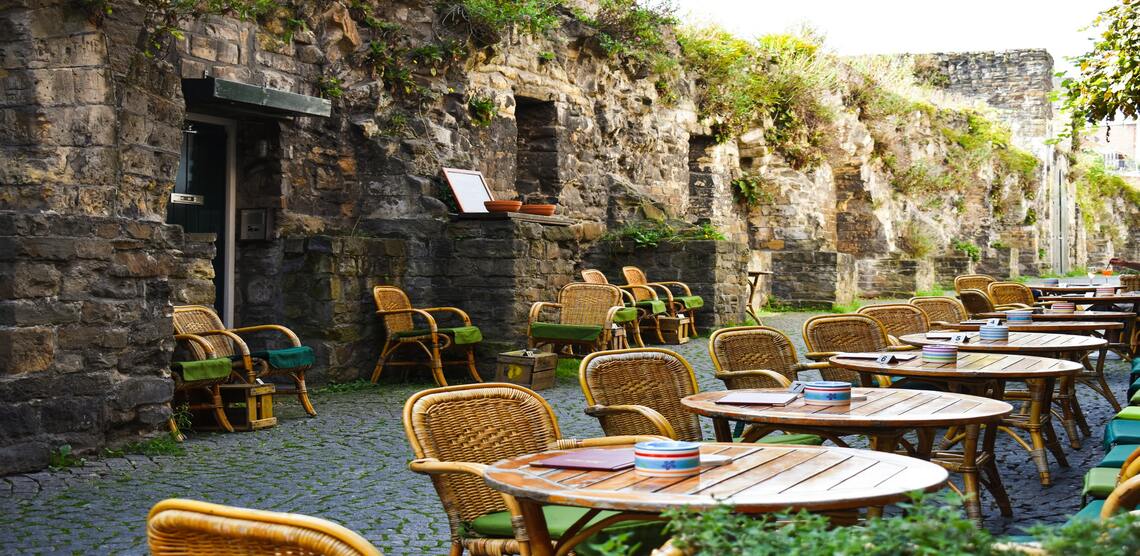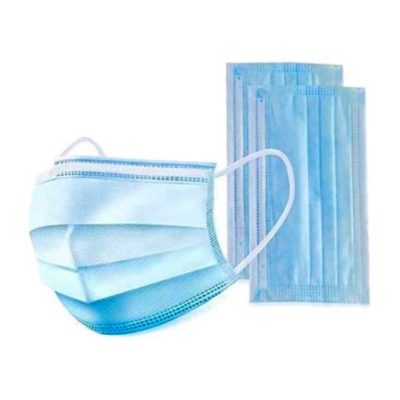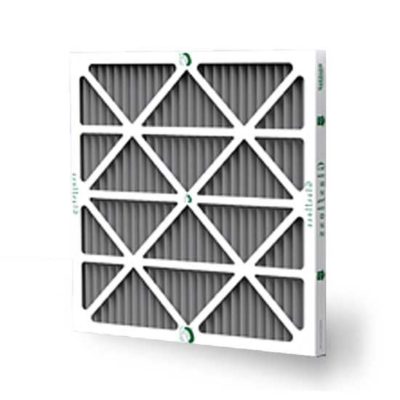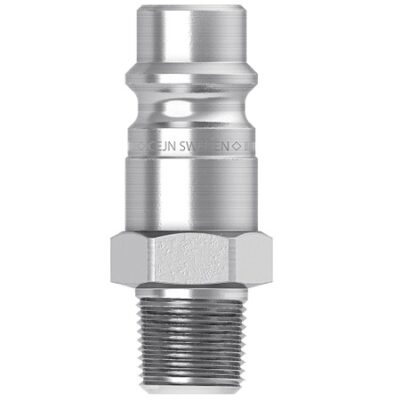According to research from hospitality consultant group Vucurevich and Simons, an initial investment of $200,000 in outdoor-dining space could result in $500,000 in sales. That is a hefty chunk of change! Imagine how much more you could be making if your patio was a hot spot for customers all summer long, no matter how hot it gets.

With the right cooling solution you can keep your patio area comfortable for both patrons and employees. No matter your location, there is an option that will fit within your price range and be effective in your climate.
With that being said, let’s get started!
How to Decide
Before you know which cooling solution will work best for your commercial patio cooling solution, you have to play weatherman. Knowing the details about the weather and climate where you live is essential information you have to have before you can start looking at solutions for cooling your outdoor seating area.
Once you find this information hold onto it and use it to see which option will work best for you.
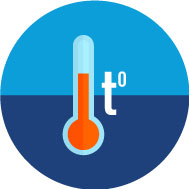
Average Temperature
What are the average temperatures in your area? Are they hot pretty often?
How hot it is outside will determine how much cooling power you will need for customers and employees to be comfortable in the summer heat.
You can find your area’s average temperatures by visiting a reliable weather website, such as The National Weather Service.

Highest Recorded Temperatures
So, you’ve already found the average temperatures for your area in the summer months, but what if there is a heat wave?
You want to be able to accommodate for those days when the heat is unbearable. Let’s use our home state of Texas, and our closest big city, Dallas, as an example.
The average temperature for July and August is 96 degrees, however on average there are 17 days at or above 100 degrees in North Texas.
That’s potential for 17 days, maybe more, where people don’t want to dine at your establishment and will go to Joe Schmo’s joint with the fancy patio cooling solution instead.

Average Relative Humidity
Relative humidity matters because it tells you how easily sweat can evaporate from your skin. This is important because the faster your sweat can evaporate, the easier it is for your body to cool you off.
In high relative humidity the air has a lot of water vapor present in it and your lovely little sweat beads don’t have anywhere for them to evaporate to, which means they stick around longer and you stay warm.

Average Wind Speed
Average wind speed will tell you how strong the wind in your area is and in what direction it typically blows.
Some methods of cooling aren’t effective if there is a wind speed over 10 miles per hour. Using our example city, Dallas, let’s discuss average wind speed. August is without a doubt the hottest month of the year and it can get sweltering! However, wind speeds on average are only around eight miles per hour, which means those options can still be used!
But if you live in say, Oklahoma City, which has an average wind speed of around 9 miles per hour in August it might be a gamble. So without an extra awning, patio enclosure or something blocking the wind, it could be a better option to use a method that will be unaffected by wind speed.
Find your local wind speeds and directions by visiting a wind monitoring website like this one.

Air Flow
Air flow is how much air fans and other cooling machines can move. This number will tell you how large of a cooling system you should purchase.
Air flow is measured in cubic feet per minute, called CFM. To find CFM you first need to know the volume of a room.
Volume is measure by multiplying length × width × height. So, let’s say your patio is 25 feet by 50 feet and its 25 feet tall the volume would be 31,250.
25 x 50 x 25= 31,250 = total volume of the patio
So now we have found the volume and let’s multiply that number by the recommended number of air changes per hour, which averages out to 30.
31,250 x 30 = 937,500
Now we take this number and divide by 60, because that is how many minutes are in one hour.
937,500 / 60 = 15,625 CFM
So our final number, 15,625 is the CFM we should keep an eye out for when looking for cooling options. Depending on how shaded and enclosed your patio is you may want to double this number. More information on this later.
If you’d like more in-depth and step-by-step instructions check out our other article on CFM called CFM: How to Measure Cubic Feet per Minute and Airflow.
Options for Keeping Patios Cool
Each method of patio cooling works in a different way and is most effective in certain climates. By using your research from the last section and the information we are about to give you, you should feel confident you have all you need to find the perfect cooling solution.
Swamp Coolers
Swamp coolers, aka evaporative coolers, use a very simple science to chill things off. This technology has been around forever because it works, I’m talking ancient Egypt old. But instead of fanning bowls of water we have these nifty machines that will do it for us. Swamp coolers use a fan that passes air over a water soaked pad.
OK, so remember that whole evaporation bit with the sweat and the things? Well, let’s come back to that because it’s important when talking about swamp coolers.
As water evaporates, it instantly cools down the air around it. This is how sweat cools down your body and it’s the same way that evaporative coolers work.
Now the only downfall of the evaporative cooler is that it does not work well in humid climates. The more dry and arid the place you live, the better it will do. Humid areas with high relative humidity prevent evaporative cooling from being effective.
Check out the table below to see if your area is a good spot for evaporative cooling.
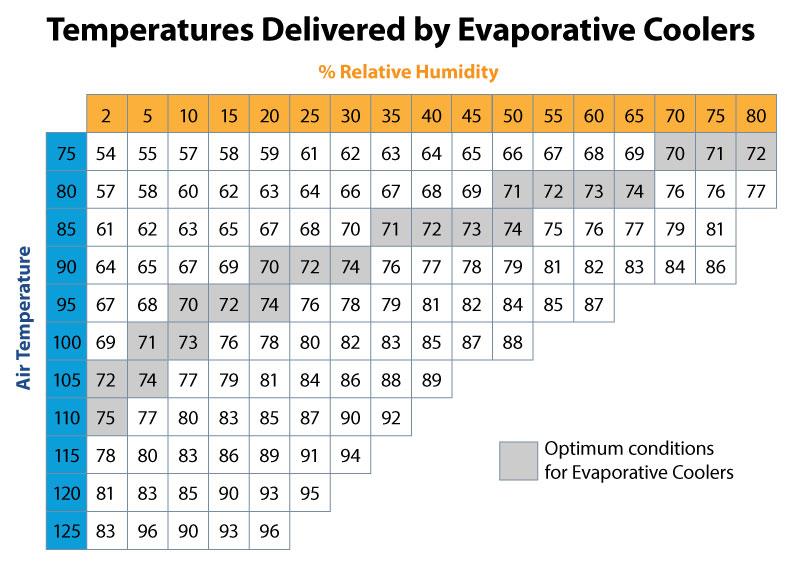
Portable Air Conditioners
Portable air conditioners work just like your refrigerator at home, using compressors, refrigerants and an exhaust hose to expel the heat created from the cooling process. That hose makes them look more like they belong on a spaceship but they look more complicated than they really are. Set up is surprisingly easy!
There are multiple options for setting up a portable air conditioner. You can get it up inside and lead the hose out of a widow, gaps between tents or booths, wall openings, ceiling or floor. Want to hide your unit because it ruins your patio aesthetics? Find a decorative screen or another design element to conceal it.
Portable air conditioners are best used in enclosed patios because they need some type of protection from wind to prevent all the cool air they create from being carried away with the breeze.
Oscillating Fans
Did you know that fans don’t actually cool down the room? They don’t change the temperature but they do make our buddy, evaporative cooling work better. The movement of the air across your skin helps your sweat evaporate, which cools you off.
A motor spins the fan’s blades creating a breeze. The breeze circulates around the room or area and helps to cool you off.
Ceiling Fans
We have all seen a ceiling fan, and you probably have one in your house! They are very effective at moving around air and helping rooms feel cooler. They can do the same for your restaurant patio!
They work just like your average oscillating fan, but they are placed out of sight, out of mind on the ceiling. They do not take up any floor space, making them a great choice for small seating areas where every inch matters!
Blowers
Blowers work in the same way that your usual fan works, but they provide a more powerful air flow in a specific direction. Regular oscillating fans simply move air around and help circulate air.
These are a great option if you already have a natural air flow through your outdoor dining area. A blower can enhance the natural breeze in the space and help make the area feel more comfortable for staff and visitors.
They provide more of a gust than a gentle breeze, so be sure that you won’t be blowing away napkins and ruining people’s hairdos.
Mister Fans
Mister fans are your standard fan with the addition of a water system that creates a cooling mist. This fine spritz of water also uses evaporation to help you feel cooler.
As the water leaves the fan system some of it immediately evaporates. The H2O molecules break free from the liquid, requiring a lot of energy. The H2O molecules use whatever energy is nearby, such as heat, which cools the air around it, dropping temperatures. The smaller the droplets the faster this process occurs and the more cool the air becomes.
Mist is so effective at cooling air, China uses “mist cannons” to help lower temperatures on busy and overheated streets. One fan can cool an area up to 1,000 square feet by as much as 30 degrees.
Like all cooling solutions that use evaporation, misting fans work best in dry climates where the relative humidity is low. The chart below shows the areas where this option will be the most effective.
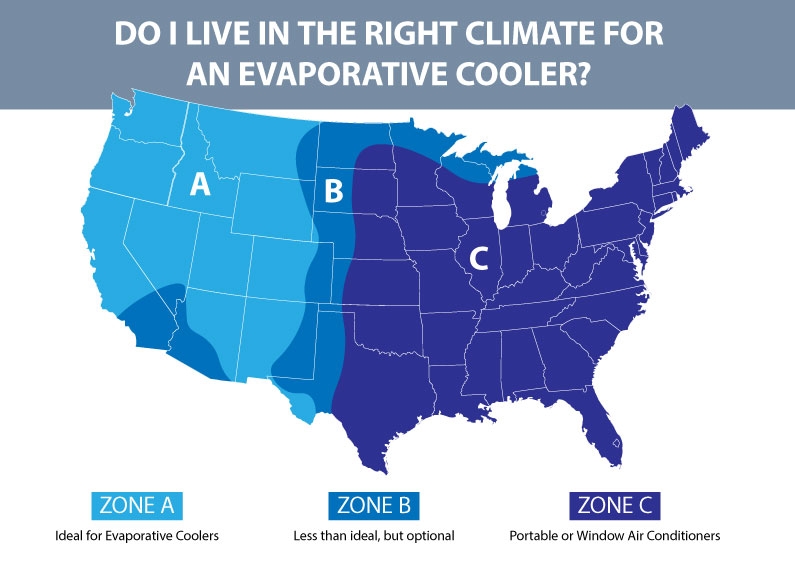
Other Helpful Hints
Cooling solutions will do the brunt of the work, but here are a couple inexpensive additions that will increase comfort on your patio.
Shaded Areas and Umbrellas
On hot days animals flock to shaded areas, and for good reason! Outdoor shades can make temperatures feel 10 to 15 degrees cooler. The shade protects you from solar radiation which can cause you to feel even warmer than it is outside.
Fun fact, did you know that temperatures are always recorded in the shade? The effects of solar radiation can skew temperature readings. Taking temperatures in full sunlight and in direct radiation makes thermometers read higher than they should, giving and inaccurate recording.
Air Curtains
Because your kitchen and likely your bar area are located inside, your servers will be opening and closing the door leading to the outside often. And why is this bad? Bugs, outside air, pollen, and smoke – Just to name a few.
To prevent pests and other nasty contaminants from entering your restaurant and bothering your guests seated inside, an air curtain is a relatively low investment to keep them out.
They are also great at helping to keep the inside of your restaurant cool and reduces the strain on the existing AC system. This can reduce energy costs and helps prevent warm air from exiting your building in cold winter months too!
They blow air, making an invisible curtain that keeps things you want to stay outside, outside and the things you want to stay inside, inside.
Conclusions
With an investment into your patio area, you will quickly see an uptick in revenue for your business. Patrons love to dine outside and by keeping them cool and comfortable you will keep them coming back, time and time again. This was a pretty long article, so let’s review the highlights.
- You have to know what the area you live in’s average air temperature, average relative humidity, average wind speed, and highest recorded temps.
- There are many options for cooling your patio and all have their strengths and weaknesses.
- Air curtains and shaded areas will help aide your cooling system.
If you are still unsure about which patio cooling system will be right for you and your business, don’t hesitate to call us at 972.694.4291. You can also request a quote online, HERE.

